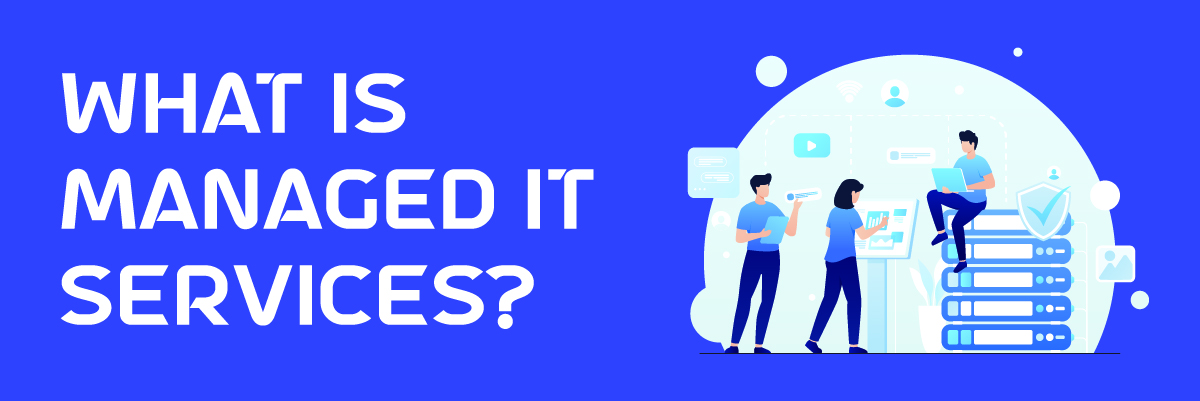Red Flags: It’s time to switch your IT Managed Service Provider
Red Flags: It’s time to switch your IT Managed Service Provider
Technical hiccups happen regardless of your business’s size, niche, or geography. And outsourcing your IT infrastructure services to an MSP provides you with a dedicated team that can handle all such issues. This team is always on alert to address any problems, getting you back up and running as soon as possible. You hire MSPs to fix your problems and reduce your downtime.
But fixing issues and keeping it running are slightly different things, though. If you find your MSP fixing the same issue numerous times, you’re probably with the wrong MSP. Actual MSPs must be less product-focused and more focused on solving client problems. In addition to billable hours, your MSP should track the uptime of your systems.
Sometimes with specialized services, like those an MSP provides, it can be hard to assess how well they perform their job. But the bottom line is that outsourcing your IT to a managed service provider (MSP) is supposed to make your life easier. If it doesn’t, something has gone wrong. There are subtle signs that your MSP is no longer the right fit for you. A few questions to introspect are:
How often has your MSP not even known there are issues until you tell them? Do you consider your MSP as an on-demand IT service provider?
The answer to this question is about strategic fitment. Do you consider your MSP a transactional partner or partner to work with you? It’s not enough that your MSP is fixing IT issues that arise. They should proactively assess hardware and software needs and security practices bi-annually or quarterly. And this can even be outside their written contract (scope of work). Proactive maintenance makes all the difference when it comes to IT management.
A good MSP should regularly monitor your IT infrastructure and identify issues before they become bigger problems, and they should have the expertise to provide proactive support and guidance. If you feel like you’re having to tell your MSP about issues and they’re not taking a proactive approach, you may want to consider finding a different provider that can better meet your needs.
Do your MSP over-promise and under-deliver?
It is important to carefully evaluate the capabilities and reputation of any MSP before entering into a partnership. This can include checking references, researching customer reviews, and reviewing their offerings and guarantees.
Some MSPs may over-promise and under-deliver, while others may provide high-quality services and support. It is important to thoroughly research and choose an MSP that aligns with your organization’s needs and priorities and to establish clear expectations and performance metrics to ensure that the MSP delivers on its promises.
MSP industry has cut-throat competition. And to survive, many MSPs rely on the effectiveness of their salespeople. However, the challenge with this method is that sales calls or pitches often commit big promises upfront to secure your business.
In reality, the service provider might not have the capacity or competency to deliver such services. Reviewing your IT service agreement lets you pick areas where your MSP hasn’t delivered up to its promises.
 Does your MSP have the vision to plan and execute for the future? How good is your MSP in project management skills?
Does your MSP have the vision to plan and execute for the future? How good is your MSP in project management skills?
The sole purpose of your MSP is to provide reliable IT services. And that can’t be achieved with a myopic view of day-to-day operational issues. Your MSP must champion taking cues from regular issues, devise long-term plans that put you in the driving seat and execute with a transparent governance model.
If you are experiencing difficulties with your current IT-managed service provider, it may be time to consider switching to a new provider. One red flag to look out for is if your current provider struggles with cloud migration or the free flow of information.
Another red flag is if your provider cannot accurately write a scope of work document or create a service level agreement. If your provider is not delivering on project objectives or not meeting the agreed-upon project plan, this may also be a sign that it is time to switch.
Additionally, if your provider is not knowledgeable about cloud infrastructure or data center management, this could be a red flag.
Do they track response time? How well do they handle complaints? Does your MSP manage stakeholder communications effectively?
One of the best indicators to answer this question is MTTR (Mean Time To Repair/Resolve/Recovery/Response), MTTF (Mean Time To Failure), MTTA (Mean Time To Acknowledge), and MTBF (Mean Time Before Failure).[1] These can be good baseline or benchmark that starts more challenging conversations regarding the process, RCA methodologies, response protocols, and more.
Another issue to watch out for is if your provider is unfamiliar with the project goals and deliverables or cannot create a project plan that aligns with these goals. If the provider’s team members are not working collaboratively or the provider’s business model does not align with your organization’s needs, these can also be red flags.
Ultimately, it may be time to switch if your provider is not delivering the expected service level. When making the switch, be sure to carefully review the terms and conditions of the new provider’s service agreement and work closely with them to ensure that the project is delivered successfully.
How well does your MSP align with your organization’s culture? Do they own your issues? Do they consider your users as their ‘own’ users? Do they track CSAT?
Can you ring your MSP at 2 AM and be assured that someone will be working on the ground to resolve a critical business issue. Does your MSP empathize with you in a significant outage and work tirelessly to bring back the system? Does your MSP think about the solution first or bring the contractual scope of work in every discussion? How well does your MSP resonate with your user community, values, and vision?
If answers to the above questions are No, is your service provider an MSP then? Yes, an MSP is responsible for a specific and agreed set of technologies for an agreed-upon subscription cost. But, if your MSP only does time and materials on a break-fix basis, they aren’t an MSP.
It would help if you didn’t forget that an MSP is a Managed Service Provider. The effectiveness of managed services lies in their simplicity. They augment your competency rather than you shifting your operational complexities. Actual MSPs think beyond their scope, which benefits your entire landscape.
Final Words
If you’re not receiving the level of service you expected or if you feel your provider is not actively working to solve your issues during a contract period. This can happen, and you have the right to switch when it does.
When it comes to choosing a manage service provider in rockland county NY to handle your company’s tech needs, trust is key. Partner with Protected Harbor, when our members think of us, they don’t just think of us as an MSP. We are more than that.
We will walk you through the process of selecting the best solution for your company’s specific needs. Once you’ve signed up, you’ll have access to our years of experience and you can manage all of your company’s IT tasks, request support, and configure your team’s profile settings.
If you need help managing your business, Protected Harbor is the go-to MSP in Hudson Valley New York. Together we will identify areas of improvement, outline a road map for change, and put a process in place to track your progress. Contact us for a free IT Audit.






 Customer Experience (CX)
Customer Experience (CX)



